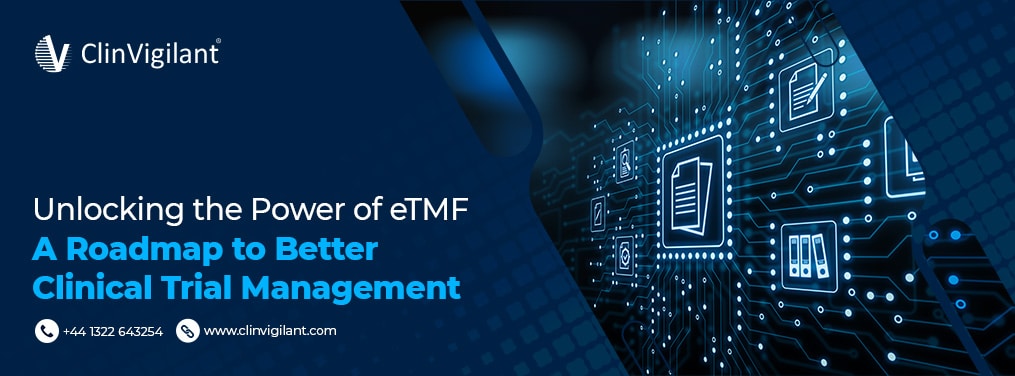
Clinical trials are the backbone of medical research and development. Managing the vast amounts of documentation generated during clinical trials is a huge undertaking. The trial master file (TMF) contains all the essential documents needed to demonstrate compliance with regulations and good clinical practice. Traditionally, TMFs have been paper-based and proving difficult to manage efficiently. This is where electronic TMFs (eTMFs) come in – to simplify document management and take clinical trial oversight to the next level.
In this blog post, we will cover everything you need to know about eTMF systems – from their definition and key benefits to best practices for implementation. We will also look at how eTMF is transforming clinical trial management and what the future holds for these powerful systems. Let’s get started!
What is eTMF?
An electronic trial master file (eTMF) is an electronic document management system specialized for clinical trial records. It provides a secure online repository for all TMF documents with an organized structure and audit trail capabilities.
The key components of an eTMF system include document workflow tools, access control, search and reporting functions, and integration with other clinical trial systems like CTMS and EDC. eTMF allows multiple parties involved in a trial, like sponsors, CROs and sites, to collaborate effectively through document sharing.
Compared to traditional paper TMFs, eTMF offers game-changing advantages. Firstly, it eliminates the need for physical document transfer and storage space. Everything is stored and accessible online. eTMF In Clinical Trials also allows easy search, retrieval and review of documents through metadata and indexing. Reviewing records is much faster, taking minutes rather than weeks. Lastly, it improves version control and enhances compliance through maintained audit trails and reporting tools.
Benefits of eTMF in Clinical Trials
Adopting an eTMF system provides immense benefits at every stage of your clinical trial. Let’s examine some of the top advantages:
- Improved collaboration – The online access to documents enables sponsors, CROs, sites and other parties to work together seamlessly on a trial regardless of geographical distance and time zones.
- Time and cost savings – eTMF eliminates the need for printing, couriering and storing paper documents. This significantly reduces trial costs and documents can be accessed instantly.
- Enhanced quality control – All information is centralized and organized digitally, which results in better document control and process efficiency.
- Inspection readiness – eTMF allows quick access to any document required during audits and inspections, improving readiness.
- Tracking and reporting – It enables up-to-the-minute reporting on TMF status for issues like missing documents or processes lagging behind.
- Streamlined processes – Structured workflows and integration with other systems creates seamless, automated document processes. This ensures improved compliance as well.
Clearly, eTMF delivers immense advantages over paper-based records for clinical trial conduct and management. But what does it take to implement these systems effectively?
Best Practices for Implementing and Managing eTMF
Follow these proven strategies to successfully deploy and manage your eTMF system:
- Build a proactive TMF strategy early – It is ideal to plan your TMF processes before the trial starts, rather than trying to organize documents retroactively into the eTMF. Define document workflows, access control and timelines upfront.
- Ensure GCP compliance – Set up your eTMF system to comply with GCP guidelines from the start for protocols, reporting, audit trails and personnel training.
- Implement robust eTMF features – Your system should have user permissions, secure cloud storage, data backup, change logs and integration capabilities.
- Regularly review and update – Continuously review eTMF status and keep documents like protocols and consent forms updated in the system.
- Train your staff – Thoroughly train your team on using the eTMF system to ensure correct document maintenance and access control. Provide ongoing support.
Following best practices is key to harnessing the full power of your eTMF investment. But like any new technology, adopting eTMF comes with its own challenges.
Overcoming Common Challenges in eTMF Implementation
When rolling out an Trial Master File In Clinical Trials System, you may encounter some common challenges like:
- Driving adoption – Users like clinical investigators may be resistant to move away from paper processes. Encourage adoption through training and by highlighting eTMF benefits.
- Ensuring security – Address data privacy concerns by having strict access controls and data encryption. Follow industry security standards.
- Enabling integration – You may face issues when integrating eTMF with existing clinical trial management systems. Seek expert guidance on interfaces and connections.
While transitioning to eTMF takes concerted change management, the benefits make it worthwhile. Some tactical help like change advocacy and technical support goes a long way.
The Future of eTMF and Clinical Trial Management
eTMF systems are transforming clinical trial execution in many ways. Here are two emerging trends to watch out for:
- AI and machine learning – With advanced analytics, eTMF systems can automatically classify documents, extract metadata, and ensure quality control. This further enhances efficiency.
- Interoperability – As adoption grows, the need for standards for exchanging clinical trial data between different eTMF solutions increases. This interoperability will benefit sponsors conducting multi-system trials.
Already eTMF has made paper-based master files nearly obsolete. The future will see tighter eTMF integration with trial design, management and analytics for a holistic view of trial processes. eTMF will continue to drive higher quality trials and faster timelines.
Conclusion
eTMF systems are revolutionizing clinical trial documentation and processes. They deliver immense advantages like real-time collaboration, accelerated timelines, and superior compliance over traditional paper TMFs. However, careful planning and change management is key to their successful adoption.
Looking ahead, eTMF will continue to evolve with technologies like AI and interoperability with other clinical trial systems. As clinical research gets more complex, eTMF will play a central role in trial efficiency and quality. The time is now right for sponsors and CROs to unlock the power of eTMF for streamlined trial execution.

